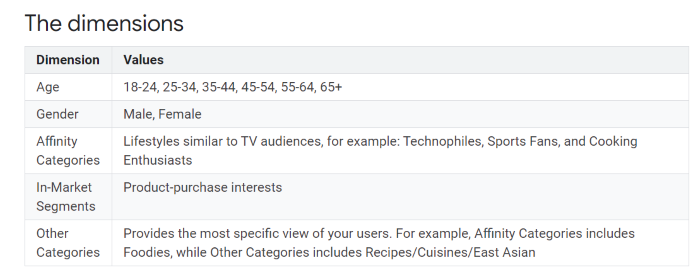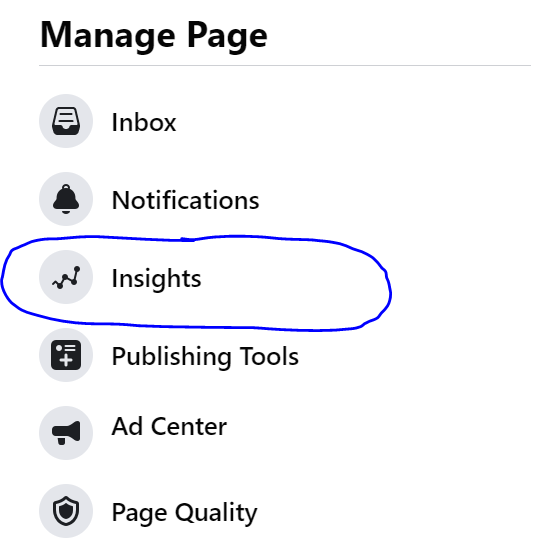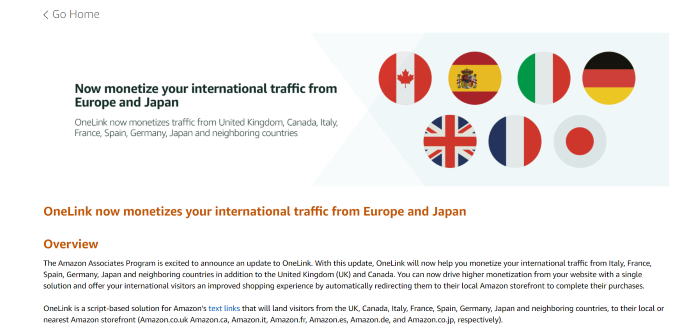
You’ve poured a ton of time into creating a blog. You are regularly posting content, so you’re starting to build up an audience.
At some point, you’ll probably want to monetize it, right? Why not get all that hard work to pay off?
So, you dive into affiliate marketing, which has a lot of earning potential. A study from VigLink (now Sovrn) shows that affiliate marketing is the biggest revenue generator for publishers after Google AdSense.
Once you’ve started with affiliate marketing, you can gain more revenue from using more advanced affiliate methods.
What is Advanced Affiliate Marketing?
Before we get into advanced affiliate marketing, here’s a quick refresher on how affiliate marketing works.
Affiliate marketing is an effective way for anyone with a blog or social media following to earn money. Basically, it’s commission-based sales. You promote a product to your followers, and if they purchase through your affiliate link, you get a cut of the profits.
Many affiliate marketers use networks like Amazon Associates or ClickBank to find products they can promote. Since these networks have a wide variety of products available, it’s pretty easy to find things your audience might like.
A lot of people think of affiliate marketing as a way to make easy, passive income. That is only partially true.
Sure, you can make some money by just slapping a few links on your website, but if you really want to profit from affiliate marketing, you’ll have to put some thought and strategy into it.
So “advanced affiliate marketing” could be defined as using sophisticated strategies to earn more from your affiliate marketing.
What does this mean in practice?
It could mean finding the best niche to promote, choosing products your audience will like, and finding effective ways to promote them, among other things.
Below, I’ll explain how you can use advanced affiliate marketing to earn more money from your online content.
6 Ways to Incorporate Advanced Affiliate Marketing Into Your Business and Increase Revenue
So, you’ve already got an affiliate marketing site built but are looking to take your site to the next level? Here are six advanced affiliate marketing strategies to try.
Tailor Your Products to Your Audience
This one is super important: Make sure you’re promoting things your audience wants.
This can be more complicated than you might think.
Choosing great products to promote is about more than just picking categories that are generally aligned with your blog. It’s about understanding your audience and their psychology.
For example, you might assume that a new high-tech baby stroller would be an excellent product to promote since you have a parenting blog. But maybe you’ve drawn in a lot of price-conscious readers with your posts about meal planning, coupons, and budgeting.
If you promote a product that’s out of most of your readers’ price range, they won’t buy. More importantly, you could end up looking inauthentic and too salesy, which will turn people off and hurt your brand.
When it comes to understanding your readers, data and analytics are your friends. Use them wisely.
If you don’t already know who’s reading your blog, you should take steps to find out. Software like Quantcast can show you this data or use the Demographics and Interests feature in Google Analytics.
Here’s what Demographics and Interests can show you:

Besides getting actionable data from Google Analytics, you can use several other methods to better understand your audience.
Social media is an excellent source of data. Some social media platforms have built-in analytics features that make it easy to understand who’s following you.
If you have a Facebook page, you can go to “Manage Page” > “Insights:”

Then click “People” > “Your Fans.”

You can also do this using Instagram Insights if you have a business account or YouTube’s Channel analytics tools.
If you want a more in-depth picture of your social media analytics, there are tons of third-party tools you could use as well.
And if you have a specific question, why not just ask your followers?
Send out a survey asking what type of content they would like to see. A more personalized affiliate program means both happier followers and more sales, so it’s a win-win.
Be Transparent With Your Affiliate Efforts
If you want to make money with advanced affiliate marketing, you have to be transparent.
You should let your readers know when you’re using affiliate links for a few reasons. First, it can help you stay on top of regulation and avoid any potential legal issues.
Second, it helps you build and keep your readers’ trust. If your audience suddenly “finds out” they’re being marketed to when they didn’t realize it, they’ll get upset, and you’ll lose your following — meaning you’ll be making zero money from your affiliate program.
A third reason you should be transparent about affiliate links is that it makes your site look legitimate and less spammy, which is essential when trying to avoid search engine penalties.
Don’t forget that Google penalizes “thin affiliate pages,” so along with being transparent; you should also make sure your affiliate links are integrated into interesting and valuable content.
Choose Great Products in a Profitable Niche
Maybe you’re thinking of building out new content based on affiliate products. If that’s the case, you’ll want to make sure to choose a niche that can make you money.
If your market is receptive to high-value products, that’s a good place to start. Since you’re earning a commission, selling something more valuable will make you more.
Of course, a low-value product can also be interesting if it’s super desirable, and you manage to sell a lot of it.
I’ve already covered the basics, including choosing a profitable affiliate marketing niche in a previous post. One of the tips I gave was to use Google’s Keyword Planner to identify in-demand keywords (and, therefore, possibly valuable products that are worth spending the money to advertise).
Another tip is to look for products and categories that are trending right now. If something goes viral, there’s no better time to promote it with an affiliate link or product review.
To check if a product is currently hot, you can use BuzzSumo and Google Trends.
Just look at what happened with fidget spinners:

Mid-year 2017 was the perfect time to get into that market.
And searches for face masks peaked in June 2020, with interest tapering off near the end of the year:

Put Affiliate Links Where the Most Traffic is
You don’t always have to create new content to make more money from affiliate links.
Another advanced affiliate marketing strategy that’s super easy to implement is going through your existing content to see which of your pages are currently getting the most traffic. You can do this using Google Analytics.
Once you’ve identified a few high-performing pages, add affiliate links to them.
You can also promote individual pages using paid social ads or Google AdWords. By driving more traffic to those pages, you’ll be driving more clicks toward your affiliate links.
Be strategic about this, though. Try to choose pages that are already doing reasonably well and making affiliate sales, so you don’t waste money trying to promote underperforming content.
A/B Test Your Affiliate Links and Banners
A/B testing is a crucial technique for any online marketer, and it can also help you optimize your affiliate marketing campaigns.
Take two different versions of an ad, landing page, or other marketing asset and see which one performs better. In the case of affiliate marketing, there are a few different ways you could use A/B testing.
If you’re using affiliate links, you could test the links to see how they perform in various positions on the page. For example, links near the top of an article might be more visible, and therefore get more clicks.
If you have affiliate banners, you should A/B test them the same way you would any other ad to help overcome banner blindness.
Various ad positions and colors may perform more differently than you might expect since color can have a surprising impact on conversion rates.
Customize Your Links for Different Countries
Is there anything more irritating for a user than clicking on something they’re really interested in, only to see a big pop-up saying, “This is not available in your country?”
Or, seeing shipping and customs fees that are so high, they’re more expensive than the cost of the product itself?
This is the exact sort of thing you want to avoid with your affiliate links.
For example, if you’re linking only to Amazon’s U.S. store, your non-U.S. readers will probably click out of the page and search for the product again in their local store. You’ll then lose that affiliate sale.
With advanced affiliate marketing, you can make the experience easier for your international users by using a tool like Amazon OneLink or geo-tagging your affiliate links. That way, users are automatically redirected to their local site.
Amazon OneLink is a script that can be configured on your website.

Geo-tagging (also known as geo-targeting) can be done with a plug-in, short link, or code snippet.
Advanced Affiliate Marketing Software and Tools
If you’re looking to step up your affiliate marketing game, advanced affiliate marketing tools can help you speed things up and get better results. Here are a few popular options:
Pretty Links: This tool was specifically created to help affiliate marketers manage links and redirects. Redirects are essential for a few reasons. They help your links look better (hence the software’s name), they help you keep things organized, and they prevent bad actors from finding your affiliate links and trying to modify or poach them.
AnyTrack: AnyTrack is useful if you want to know more about where your affiliate clicks are coming from. It allows you to integrate and track your links with Google Analytics and Facebook Pixel.
CAKE: CAKE’s affiliate marketing software helps you optimize your campaigns so that you can increase your traffic and earnings.
Advanced Affiliate Marketing Training and Courses
Maybe you’d like to dig deeper into advanced affiliate marketing. To learn more, check out these courses and other training resources:
Neil Patel YouTube channel: I cover all things marketing on YouTube, and affiliate marketing is no exception. I’ve made a ton of videos about affiliate marketing, so feel free to head over to the channel and check them out.
Udemy courses: Udemy is a great learning resource, and they have courses on just about everything, including affiliate marketing. Here are a few top-rated advanced affiliate marketing courses on Udemy:
- Complete Hands-On Affiliate Marketing Course
- Click-Bank Success: Affiliate Marketing Without a Website
- How to Do Affiliate Marketing as a Full-Time Business
- Affiliate Marketing Advanced: Sell T-Shirts With Teespring
Matt Diggity’s Affiliate Lab: This course is specifically designed for creating and monetizing affiliate websites.
Conclusion
If you’ve been doing affiliate marketing for a while, you’re probably looking for insights beyond just “Add some links to your website.”
The truth is, advanced affiliate marketing is like any other kind of digital marketing. It’s all about strategy, understanding your audience, and having the right tools.
If you put the time and effort into A/B tests, check your analytics, and invest in the right software, you’ll start seeing better results with affiliate marketing.
Can you think of any other advanced affiliate marketing techniques? Share them in the comments!
The post 6 Advanced Affiliate Marketing Strategies to Try appeared first on Neil Patel.